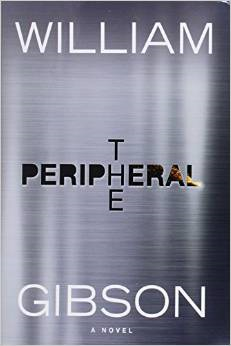I am
so happy that I have finished reading the new (Oct 2014) William Gibson book, “The Peripheral”.
Science-Fiction
was a genre that I grew up with, and now authors like Heinlein (Mars) and
Azimov (Robots) have grown and gone. The
past decade or two, I have looked to Gibson to stretch my mind 20 years out:
Pattern
Recognition (2005) was about the coming massive impact of computers’ ability to
predict future events; he delved into flash mobs controlling public opinion. Zero History (2011) recognized that retail
sales would become dominated by computer companies: Yahoo, Amazon, and Google. It was a subtle prediction, but real.
Mankind
has sought ways to avoid death probably since we recognized we were sentient:
theology was an easy way; mummification a little harder; the fountain of youth
in more scientific times; Sci-Fi offers tantalizing possibilities as in Pohl’s
“HeeChee Saga”.
In “The Peripheral”, Gibson is doing
his normal examination of where technology is headed, extending three areas
ahead for a few decades: drones, nanotechnology, and 3D-printers. But he’s also tempted to flirt with
immortality of sorts with a glimpse into communications technology that can
span time, or to be more exact alternate universes.
Instant
communication is speculative but considered a possibility if we aren’t hindered
by our perceived 4-dimensional space-time constraints.
I’m a
decent techie reader, but I was totally lost for the first 50 pages; then I had
only a glimmer over the next 50 of what was happening. I love this challenge. Now at page 120 (of 482), I got it.
“We’ll need to
buy specialized printers in the stub,” Lev said. “This will be beyond what they usually work with.”
“Printers?”
“We’re sending
files for printing an autonomic cutout,” said Lev.
“Flynne? When?”
“As soon as
possible. This one will do?”
“I suppose,”
said Netherton.
“She’s coming
with us then. They’ll deliver the support equipment.”
“Equipment?”
“She doesn’t
have a digestive tract. Neither eats nor excretes. Has to be infused with nutrient every twelve
hours. And Dominika wouldn’t like her at
all, so she’ll be staying with you, in grandfather’s yacht.”
“Infused?”
“Ash can deal
with that. She likes outmoded
technology.”
Netherton took a
drink of gin, regretting the addition of tonic and ice.
The peripheral
was looking at him.





